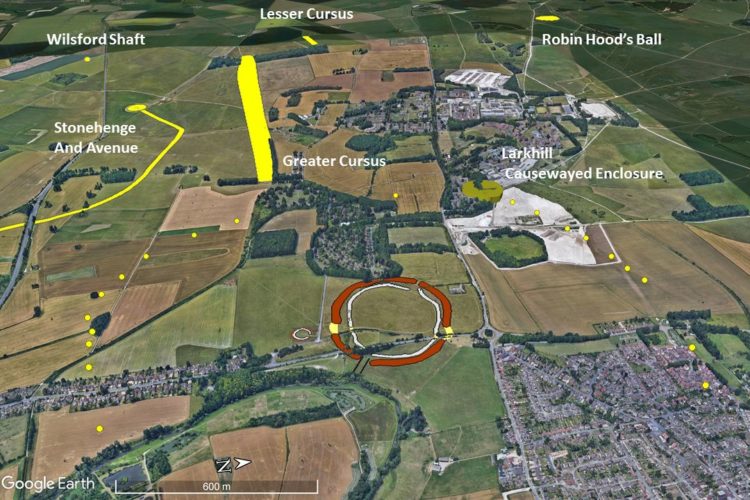Thornborough Henges: still under threat! George Chaplin, Chairman, Timewatch
On 20th September a meeting of NYCC planning committee accepted a request from Tarmac yet again to defer the application to extend existing quarrying operations into the setting of the Thornborough Henges complex. There has been a considerable campaign of opposition to the proposal, including more than 1,000 letters of objection, a petition of 10,000 signatures, statements of support and representation from The Landmarks Foundation, CIA, CBA, CBA Yorkshire, Yorkshire Archaeology Society and English Heritage. Elected representatives agreed to the deferment despite the advice of the CC planning professionals who had recommended refusal.
Stonehenge: the road to nowhereKate Fielden ( Stonehenge Alliance )
On 20 July, Roads Minister Stephen Ladyman announced a ‘detailed review of the options to ease congestion on the A303 and improve the setting around Stonehenge ’ before a final decision is taken on the Inquiry Inspector’s Report. It had been found that soft chalk and the high water table would complicate the tunnelling process and substantially increase the estimated cost of the scheme since it went to Public Inquiry – from £192m to some £470m if construction were to begin in 2005. The review, for which terms of reference are being drawn up (September 2005), will include consultation with relevant bodies, such as English Heritage and the National Trust. The Stonehenge Alliance (which includes RESCUE) will be consulted as the review progresses.
Irchester Roman Town Wall RN 96 reported that a stretch of the Roman town wall at Irchester Northants has been exposed during the construction of a new access road for the A45. RESCUE expressed concern as to how this could have happened. This issue reproduces the responses of Dr Bob Colenutt, Head of Sustainable Development, Northamptonshire County Council and Dr Glyn Coppack , Inspector of Ancient Monuments at English Heritage’s East Midlands Regional Office.
C ommunity Archaeology: The Greater Manchester Experience Norman Redhead,Assistant County Archaeologist ,Greater Manchester Archaeological Unit, The University of Manchester
Articles in RN96, prompted this article based on experience in Greater Manchester. Norman Readhead has worked on Greater Manchester’s archaeology for 20 years, and has seen many changes in funding sources, the quality and volume of archaeological work, and political and public support for the subject, but community archaeology is flourishing in the county and that there are reasons to look forward to greater public and political support for the archaeological profession.
Contract archaeology and the public: a look on the bright side Nina Crummy
Freelance Finds Specialist, Social Secretary, Friends of CAT, Visiting Research Fellow, University of Reading : Another response to the gloomy picture given in Chris Ellis’s article The Community Digs: Contract Archaeology and the General Public in RN 96 expressing a more hopeful approach to the issue.
Suffolk Garbology Project Duncan Allan, Garbology Officer, Suffolk CC
A joint venture between the County’s Archaeological and Waste Management Services funded for twelve months by The Heritage Lottery Fund. The project aims to extend the educational work of each, by introducing young people to ways of exploring their heritage by the study of what people threw away in the past and how changing patterns of rubbish disposal impact upon the environment. Schools and local communities will become involved in practical activities which excite the imagination, ask questions about present waste disposal policies, and stimulate an interest in archaeology generally.
DCMS Consultation: Principles of Selection for Listing Buildings; RESCUE’s formal response welcomes theGeneral Principles as an improvement in clarity and notes in particular that these revisions are the best expression of an holistic approach that we have yet seen from government.
MAP II Revision; RESCUE’s comments on the proposed revision and extension of Management of Archaeological ProjectsII (MAP II) (EH 1983). The full text of the comments can be seen on the RESCUE website (CHECK THIS)
All change at EH again; As English Heritage celebrated its 21 st birthday at the end of June Simon Thurley, Chief Executive of EH set out EH’s new, plans for the next five years. Driving this plan is a desire to transform the image of conservation using a new code of `constructive conservation’ based on respect understanding and consent’.it also launched a draft proposal:Towards a UK research strategy for the historic environment and its sustainable management ; the main points of which are reproduced.


